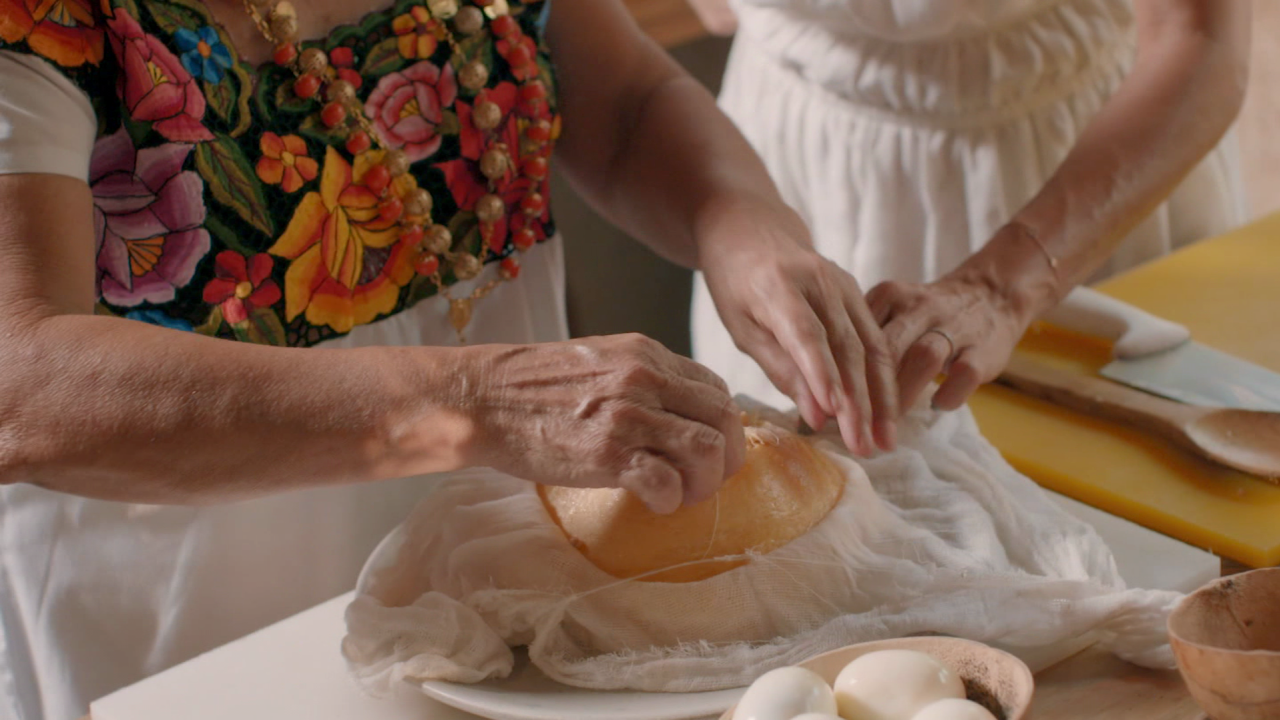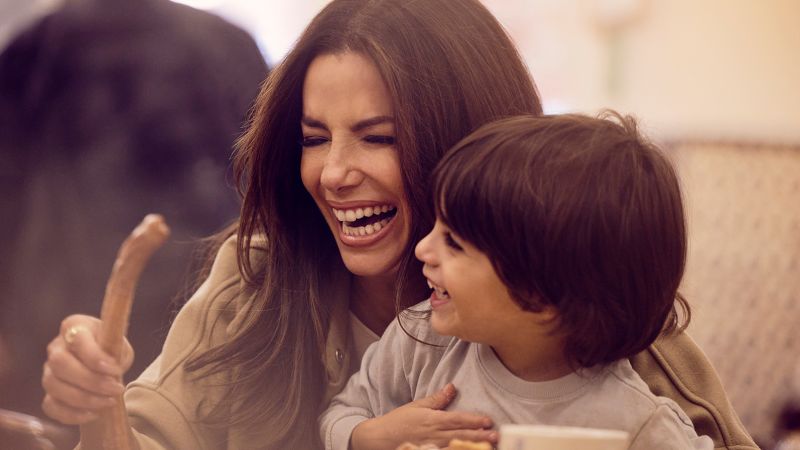Editor’s Note: The CNN Original Series “Eva Longoria: Searching for Mexico” journeys across the country’s many vibrant regions to reveal its unique and colorful cuisines. The series airs on CNN on Sundays at 9 p.m. ET/PT.
You’ll no doubt be hungry after watching “Eva Longoria: Searching for Mexico.”
Every episode is full of mouthwatering regional specialties prepared by chefs all over the country.
For those wanting to follow in Eva Longoria’s footsteps, below is a guide to the restaurants and locations she visited.
Longoria visits the coastal state of Veracuz. Its position along some 400 miles (645 kilometers) of the Caribbean Sea made it a focal point for military conflict – and the collision of food cultures. “The people of Veracruz took this treasure trove of ingredients passing in and out of the port and created a whole new cuisine,” Longoria said.
• Longoria met chef Erik Guerrero, who aims to make fishing more sustainable in Veracruz, at Namik restaurant, where they enjoyed ceviche with hot beans and soft shell crab taco.
• Next up, she joined actor and friend Ana de la Reguera for some coffee at historic Café La Parroquia, Veracruz Port. Tap on the glass three times to ring for milk.
• She headed to the lush inland mountains to meet coffee farming expert Itzel Mendoza at Cafetal Privado en Coetzala to learn how the precious bean is grown. There, they gathered flowers in the fields to be added to chicken stew, a salsa and a palm flower fritter.
• Back in Veracruz Port, she met food historian Nidia Hernández Medel at Chuchumbé, a cultural center, to cook some fried yucca, which is traced back to the city’s African slave era.
• It’s back out of the city to meet with vanilla farmer Norma Gaya, of Gaya Vanilla and Spices, for some vanilla chicken.
• At El Tajin ruins, a Totonac settlement, Longoria met cook Doña Marta. She’s the founder of Smoke Women, which keeps ancient Totonac traditions alive. They enjoyed alcamaya (fresh-water shrimp) stew and mushroom empanadas.
• Chef Luis Palmeros, a rising star on the Mexican food scene, introduces Longoria to traditional cook Doña Rocio at Cuarto Blanco Market in the inland city of Xalapa (the capital of Veracruz state), for a traditional stuffed jalapeño. He then takes Longoria to his restaurant, El Cuarto Blanco, for his modern take on the dish.
• At Tortas Ahogadas El Príncipe Heredero in Guadalajara, Longoria samples a torta ahogada – the region’s beloved “drowned” sandwich.
• In Guadalajara’s Santa Teresita neighborhood, Longoria samples a new preparation of native ingredient chinchayote at Xokol, a restaurant run by chefs Óscar Segundo and Xrysw Ruelas Díaz.
• Longoria attends a charreada, a Mexican rodeo, that takes place at Lienzo Charro Charros De Jalisco. Afterward, she sampled birria, the celebrated goat stew from Jalisco, at the clubhouse.
• Chef Fabian Delgado Padilla treats Longoria to mole with pork belly at his restaurant palReal in Guadlajara’s Colonia Americana neighborhood.
• At Lake Chapala, about 30 miles south of Guadalajara, Longoria meets with members of one of the oldest indigenous groups in Mexico, the Coca people, to talk about their fight to preserve their way of life and history on the lake. They feast on local fish called charales.
• Longoria meets friends Mariana Padilla and Alejandra Pelayo at traditional cantina La Iberia in Guadalajara. Women weren’t allowed in cantinas until the 1980s, Longoria said.
• Then she heads to to the town of Tequila, where Salvador Rosales Trejo shows her how tequila is produced by Tequila Cascahuin using traditional methods.
• Longoria and chef Fabian Delgado Padilla visit Yunaites, his casual restaurant inside a municipal market in Guadalajara, for gorditas topped with pork and mole.
Say adios to vegetables for a while. Nuevo León is the land of meat. In this state in northeast Mexico, carne asada is a go-to meal. And it’s the cuisine Longoria grew up with in Texas.
• In Monterrey, Longoria met up with Alejandro Gutiérrez, founder of the Mexican Society of Grill Masters, to try the region’s specialty: carne asada (grilled meat). In August, there’s a grill master competition in Santiago, outside of Monterrey.
• Tacos Doña Mary La Gritona has been serving breakfast tacos in Monterrey for nearly 20 years. “These are the best tortillas I’ve ever had,” said Longoria.
• El Jonuco restaurant celebrates the products of Nuevo León with a focus on seasonal ingredients. They’re known for their cabrito (roasted goat). The restaurant celebrates the little-known history of crypto-Judaism in the region, Longoria said.
• Dona Lupita’s Café, located in the backyard of her home right next to Highway 85 south of Monterrey, is famed for its legendary tamales.
• La Divinita bakery is one of the most successful bakery chains in Monterrey. The founder uses local oranges to make a traditional dessert with Longoria.
• Koli restaurant, run by the three Rivera Rio brothers, is a fine dining restaurant that aims to tell the story of Nuevo León.
Nestled within three vast mountain ranges, Oaxaca is a magnet for food lovers in the know.
A thrill of any visit here is sampling the moles, as well as dishes such as tlayudas (thin Oaxacan “pizzas”), spicy hot chocolate and asado grilled in smoky market stalls. “It is on another level gastronomically, one of the best places I’ve been to in the world,” Longoria said.
• Mercado de Abastos is a giant market on the edge of Oaxaca City. If you want your chocolate fix, the mercado is still the place to come. This region is known for its moles – complex sauces featuring many blended ingredients.
• Casa Oaxaca makes Oaxaca’s famous mole negro drizzled over turkey breast. Longoria called it a magnificently complex and sophisticated sauce.
• At Las Quince Letras, chef Celia Florián made Longoria quesillo – a stretched Oaxacan cheese –– with crickets and edible flowers.
• In the area of Oaxaca located on the Isthmus of Tehuantepec, several muxes, who identify as a third gender and are guardians of Zapotecan cuisine, cooked up stuffed pork with pineapple served alongside pureed potatoes. Longoria called it “the perfect combination.”
• The farming town of Santa Ana Zegache is the unassuming epicenter of corn. Corn has been worshipped for over 6,000 years and is still the beating heart of Mexican cuisine.
• In San Baltazar Chichicapam, Longoria visited a palenque (agave farm) run by Doña Berta, one of very few female mezcaleras. The farm produces mezcal, the smoky liquor for which this region is famed.
• La Cocina de Humo is a hip restaurant using local ingredients. Chef Thalia Barrios García is known for her heirloom tomato salad with beet puree and herbal dressing. Longoria said it’s the “perfect dish.” Here’s the recipe.
Eva Longoria calls this vegan salad ‘the perfect dish’
Mayan DNA runs through the recipes in Yucatán, which has the largest Maya population in Mexico.
The state is located along the Gulf of Mexico and is surrounded by dense forests that isolate it off from the rest of the country. The Maya thrived here for thousands of years before the arrival of the Spanish conquistadors in the 1500s. The region’s geography and turbulent history have had a significant impact on the cuisine.
• Ixi’im mixes modern and ancestral techniques and flavors. The restaurant has its own version of the most famous dish from the Yucatán, cochinita pibil. Chef Luis Ronzón slow-cooks pork underground after it’s marinated in sour orange and spices.
• Condimentos Enrique is a family-run business that sells recados (spice pastes) in Mercado de Santiago in Mérida.
• At Huniik, which means “unique spirit” in Maya, chef Roberto Solís makes onion tempura with black recado. “I have never had anything like this. This is gorgeous, and it’s delicious,” said Longoria.
• In his home in Xocén, chef Alberto Kuku prepared one of the oldest dishes, Mayan chicken tamales, for Hanal Pixán, a holiday celebrated by the Maya people that means “food for the souls.” The food honoring the dead “can easily be carried back to the underworld,” he said.
• Chef Regina Escalante, who runs Merci in Mérida, showed Longoria how to make grilled seabass with mango, avocado and flor de sal. “I’d have this as my last meal on Earth,” said Longoria. Here’s the recipe.
• At Uxmal, Mayan archaeologist Don Pepe cooked up smoked pork and bean stew. It cooks underground for 12 hours.
• Kinich in Izamal is famous for its queso relleno. A key ingredient is, surprisingly, Dutch cheese. See how it’s made:

Dutch cheese is the secret to this beloved Mexican dish


